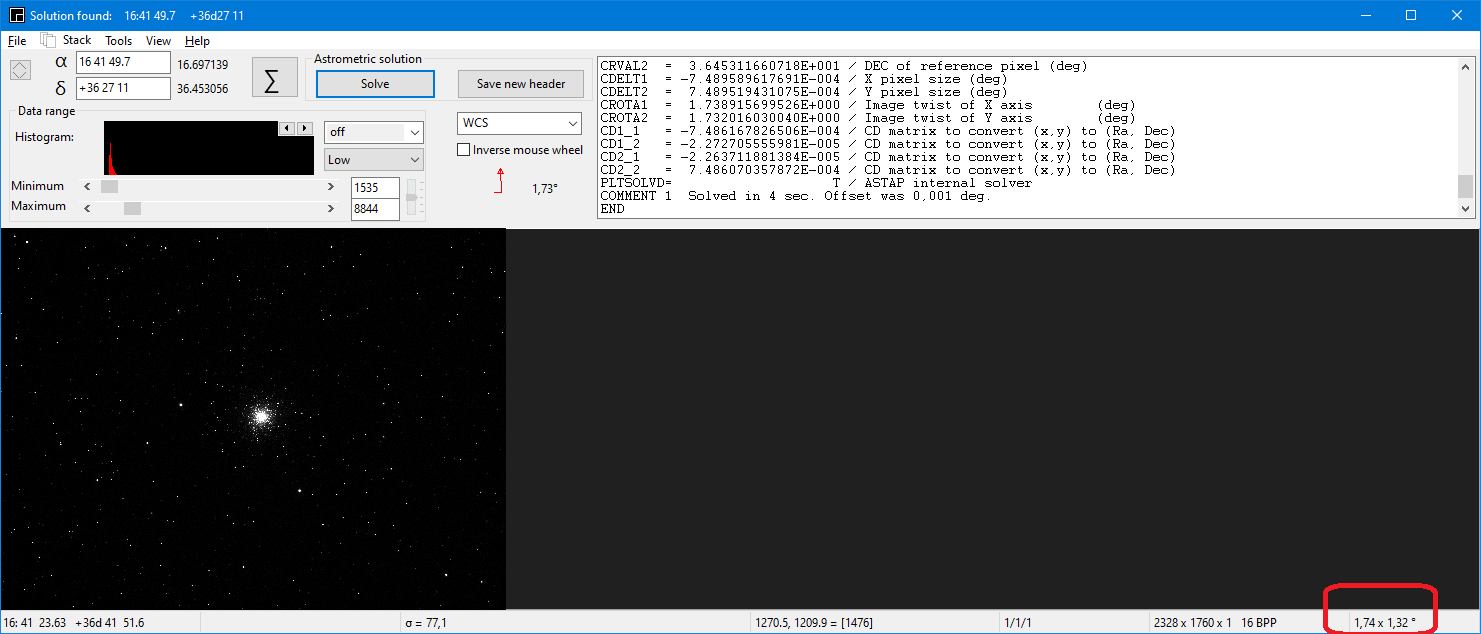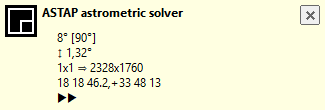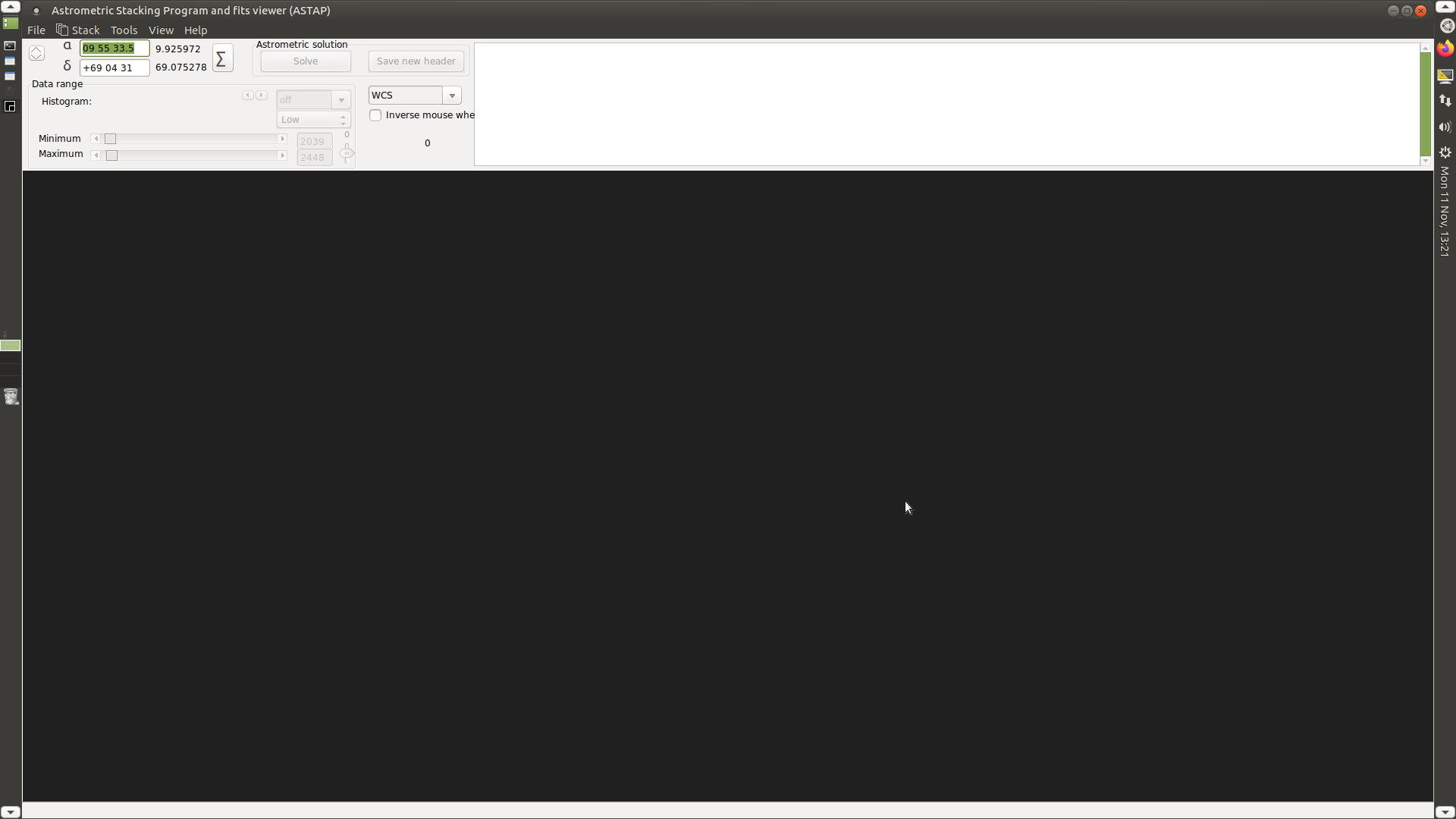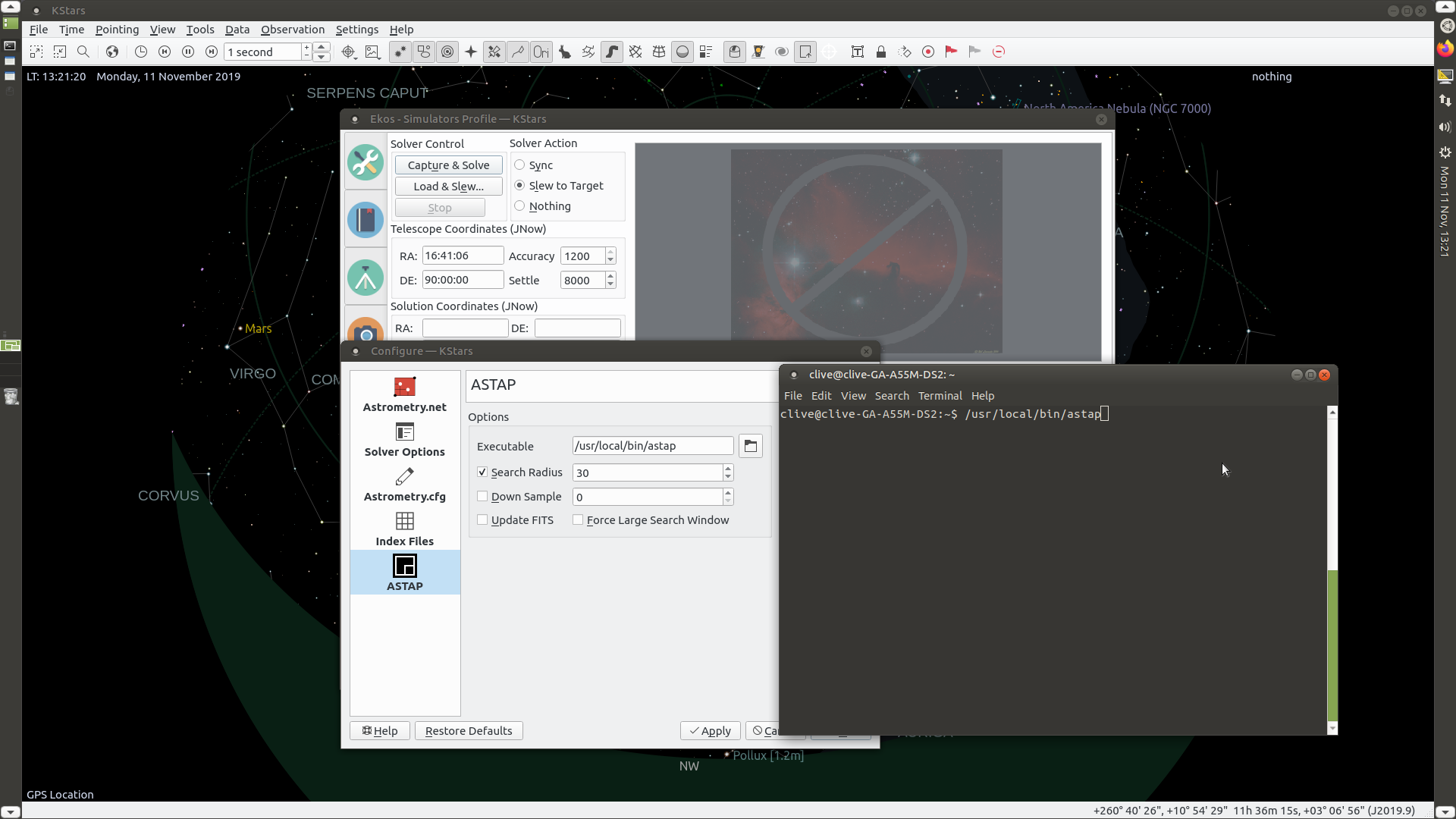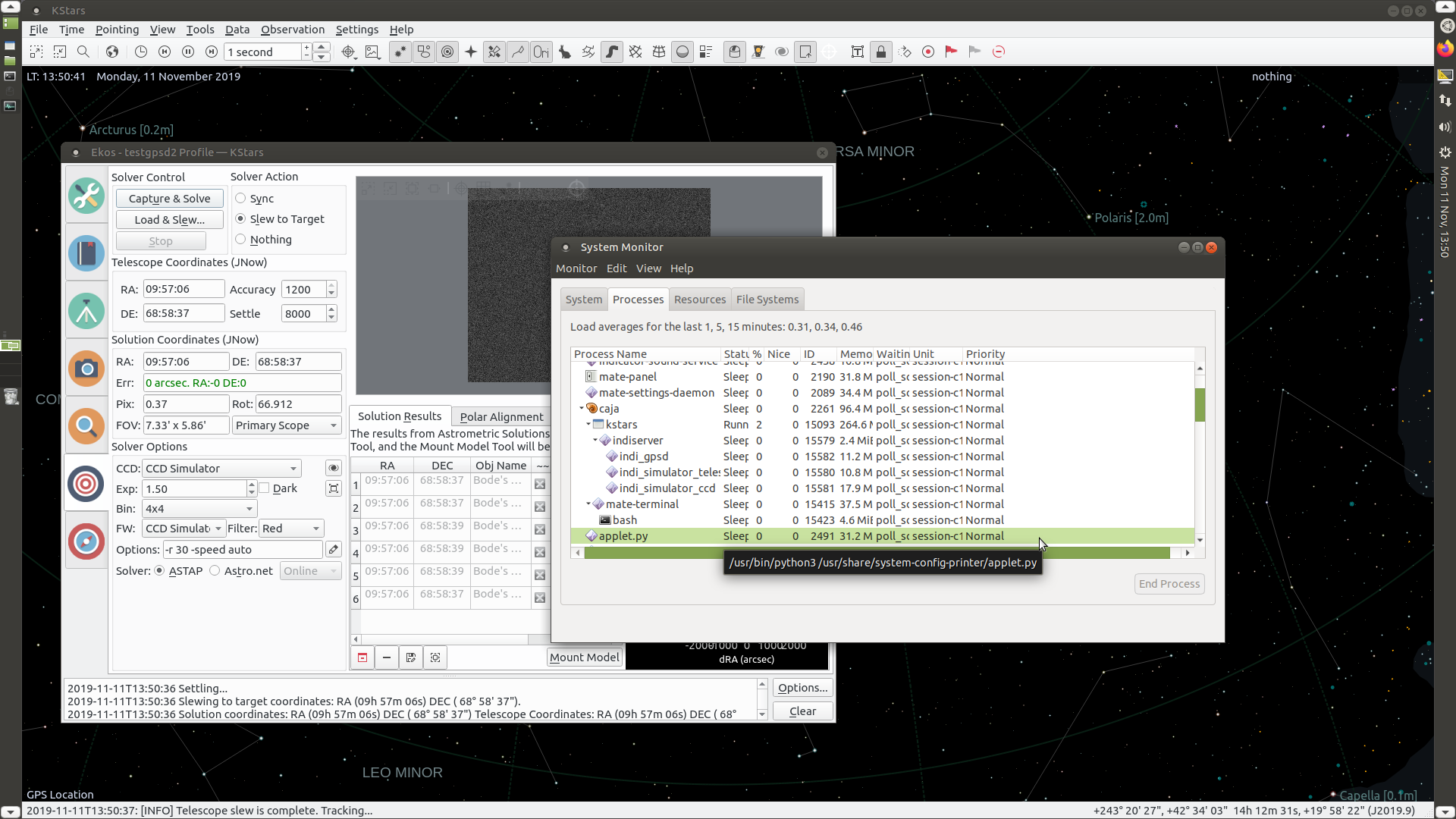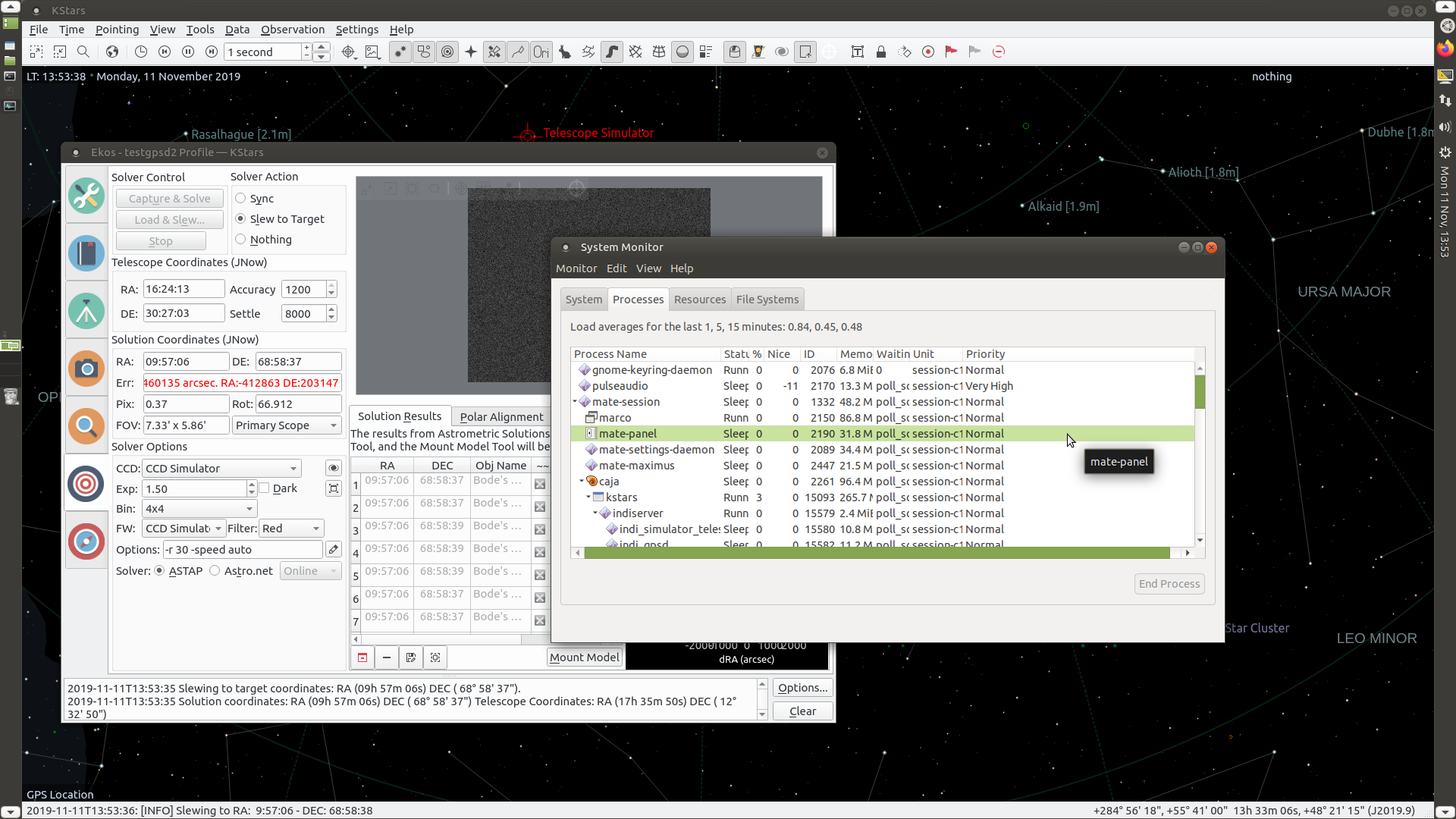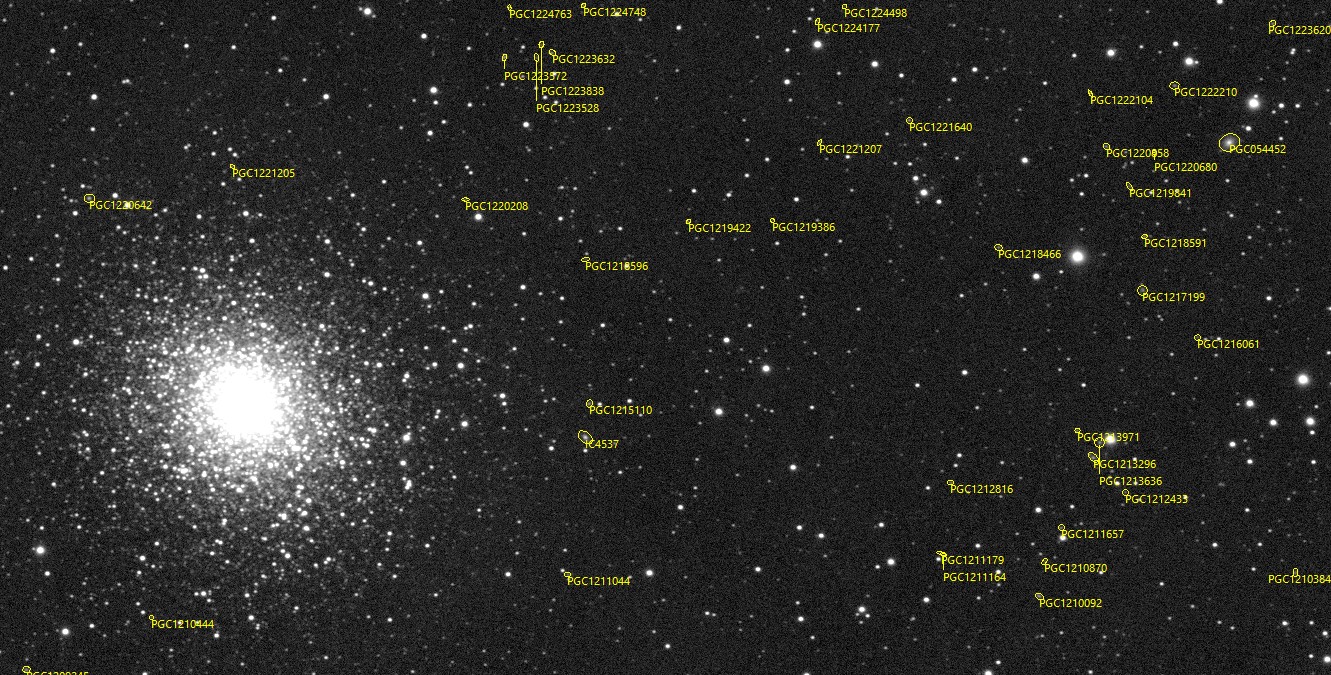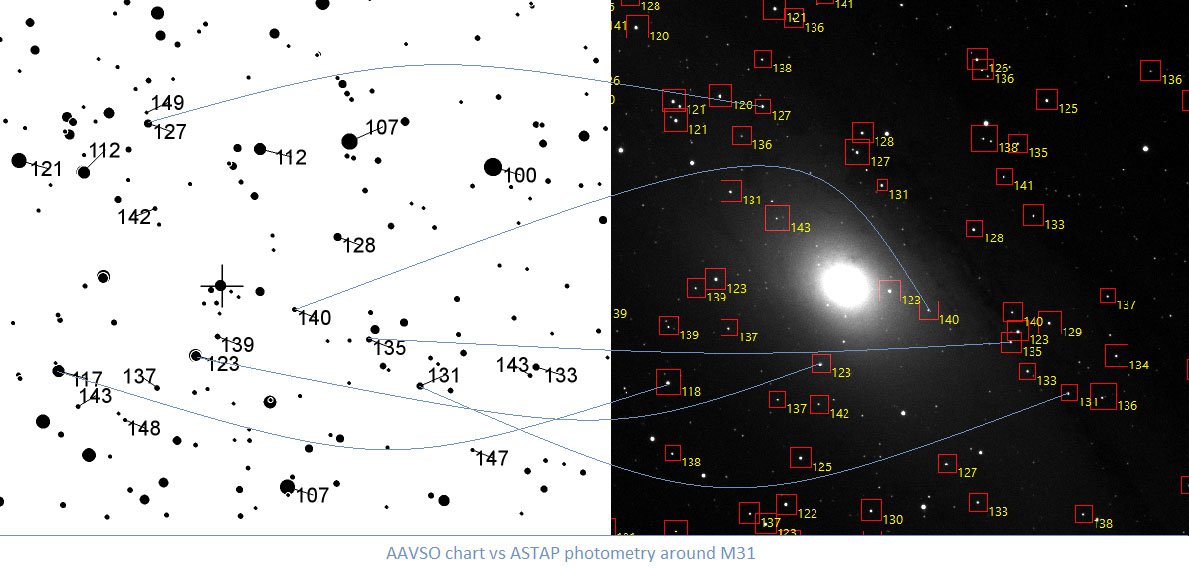INDI Library v2.0.7 is Released (01 Apr 2024)
Bi-monthly release with minor bug fixes and improvements
ASTAP astrometry integration
Replied by han on topic ASTAP astrometry integration
I suspect this is either the
1) image dimensions in pixels
or
2) image height in degrees (focal ratio & sensor size)
for 1) The image height in pixels provided to ASTAP should be at least 1000 pixels. Can you check that?
for 2) What re the image dimension in degrees of an unsolved image indicated in the status bar of the ASTAP viewer? Do they change a lot after the image is solved? If so, the initial EKOS settings focal ratio and sensor size are not accurate.
If this doesn't help, could you provide an image for testing?
Han
Small change after solving
Please Log in or Create an account to join the conversation.
Replied by AstroNerd on topic ASTAP astrometry integration
But you show the settings in the ASTAP software which I don’t have or use, I am using just Kstars / Ekos to platesolve, using the ASTAP solver, ...so have you got guides for that...the best way to test was to use the simulators as all info is prefilled and correct, but still no joy..
Please Log in or Create an account to join the conversation.
- Gilles Gagnon
-
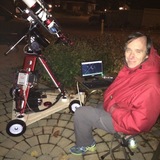
- Offline
- Elite Member
-

- Posts: 294
- Thank you received: 54
Replied by Gilles Gagnon on topic ASTAP astrometry integration
I have not done thorough tests but it would seem that the number of stars used to solve and the exposure used may be factors to be tuned together. I did do another simulated test with less/more stars being used when using shorter/longer exposures and there seems to be a relation. So, if ASTAP doesn't solve you may try to reduce the exposure in astrometry or, if using longer exposures, use more stars to solve.
As far as real life solving, the current weather tells me that I will have to wait
Please Log in or Create an account to join the conversation.
- Clive Stachon
-

- Offline
- Elite Member
-

- Posts: 407
- Thank you received: 74
Replied by Clive Stachon on topic ASTAP astrometry integration
I do not understand the reply here -if you are using ASTAP from Ekos you have ASTAP installed and are just using ASTAP in command line mode!
Han can correct me if I am wrong but all settings will still be saved as per stand alone ASTAP??? - but it maybe that some need exposing to EKOS to allow users to change WITHOUT loading ASTAP. But this is a EKOS/ASTAP integration problem not an ASTAP. problem which will come from more testing.
As for "Blind" solving" that would depend on whether the "Ignore Dec/RA in FITS header" is ticked else ASTAP will use those to start searching. For those of us who use DSLR (Canon) there are no stored Dec/RA co-ords as only Fits,as far as I know, stores solved Dec/RA co-ordinates. So if you Fits image has already been solved and the above "ignore" is not checked then ASTAP will just say its solved.
So as Han says set up a link to a full blown image and your settings and lets see if there is a problem or not - there could be
As a point of interest using ASTAP directly without 3rd party software (Ekos,CCDciel) I am solving (non blind) Fits images in under 1 sec consistently - fastest 0.5 sec's being my record - not on a RPI
Hopefully your problems will be found and corrected
Not forgetting the other option now available of "live stacking" - though admittedly not usable IMHO on PI's of any description - great if you do EAA!
RPI3 Fedora testing out on AMD desktop Fedpra 28 - running kstars 2.9.4 , Indilib 1.7.4 ?????
Please Log in or Create an account to join the conversation.
Replied by han on topic ASTAP astrometry integration
Bright or very bright stars are normally not a problem. It will work with 2, 5 or 300 seconds exposure. Default there is a star limit of 500 stara. If it sees more stars (typical much more) it will take only the 500 brightest stars (default). Try it live if the weather allow but check prior the conditions above. Especially image height should be at least 1000 pixels (check binning) at focal ratio & sensor size should be set reasonable correct in Ekos . If the search spiral is beyond 2 degrees it will show this popup notififier:
- The first line indicates the search spiral distance (8º) from the start position and the maximum search radius (90º)
- The image height in degrees (1.32º).
- Downsample setting and the input dimensions of the image to solve. (0 is auto)
- The α and δ of the start position.
- Speed normal (▶▶) or small steps (▶)[/li]
Hopefully the weather clears up soon for you.
Han
Please Log in or Create an account to join the conversation.
Replied by han on topic ASTAP astrometry integration
Easiest way to test the solver is to load a FITS image in the viewer. The important data will be extracted from the header like mount position and focal ratio and so on. The Solver specific settings can be set in tab alignment of the stack menu. Loading and solving RAW files like CR2 file is also possible but DCRAW should be installed and you have to set the initial RA, DEC position in the viewer and image height in tab alignment. So for RAW you better test with EKOS.
Settings will be save automatically so if you change some important parameters, reset them later to default from the viewer, File, SETTING, RETURN TO DEFAULT SETTINGS AND EXIT.
Han
Please Log in or Create an account to join the conversation.
- Gilles Gagnon
-

- Offline
- Elite Member
-

- Posts: 294
- Thank you received: 54
Replied by Gilles Gagnon on topic ASTAP astrometry integration
What is great with ASTAP as an astrometry solver is that not only it is very fast, its catalog, compared with the astrometry.net catalog, is manageable sizewise for systems that do not have much storage capacity (RPI, ODroid,...) and do not have access to the Internet for online solving. (y)
Please Log in or Create an account to join the conversation.
Replied by AstroNerd on topic ASTAP astrometry integration
Please Log in or Create an account to join the conversation.
- Clive Stachon
-

- Offline
- Elite Member
-

- Posts: 407
- Thank you received: 74
Replied by Clive Stachon on topic ASTAP astrometry integration
If you are able to click on the Kstars Astrometry option and tick ASTAP you will see where ASTAP is to be found as used by KSTARS. This can be manually loaded from a std terminal windows by type the full pathname. This will loaded the GUI version of ASTAP and you can try and solve an image by loading a FITS image AND by double clicking on the RA or DEC box's (top left) it will ask you for the target cordinates - so for example enter M13 and the Ra/Dec will be shown in the same 2 box's described above. You can then click on the STACK tab and another Window will be shown where you can click on the ALIGNMENT tab. Make sure that the "Star Alignment" box is choosen (this is he ASTAP internal solver). You can then set various options such as Downsample ,Max number of stars. Then just click "Solve Current Image" and watch the bottom status area which will show you what is happening.
For HELP click "HELP" and choose "online help and web page" but a lot of hints appear when you roll your cursor over various options.
See attachments for example using M81 using Kstars and ASTAP command line.
RPI3 Fedora testing out on AMD desktop Fedpra 28 - running kstars 2.9.4 , Indilib 1.7.4 ?????
Please Log in or Create an account to join the conversation.
Replied by AstroNerd on topic ASTAP astrometry integration
Please Log in or Create an account to join the conversation.
- Chris Rowland
-

- Offline
- Platinum Member
-

- Posts: 554
- Thank you received: 138
Replied by Chris Rowland on topic ASTAP astrometry integration
Please Log in or Create an account to join the conversation.
Replied by han on topic ASTAP astrometry integration
Two examples:
Hyperleda annotation near M5:
Photometry, automatic measured star magnitudes near M31 in comparison with AASVO chart:
Please Log in or Create an account to join the conversation.


